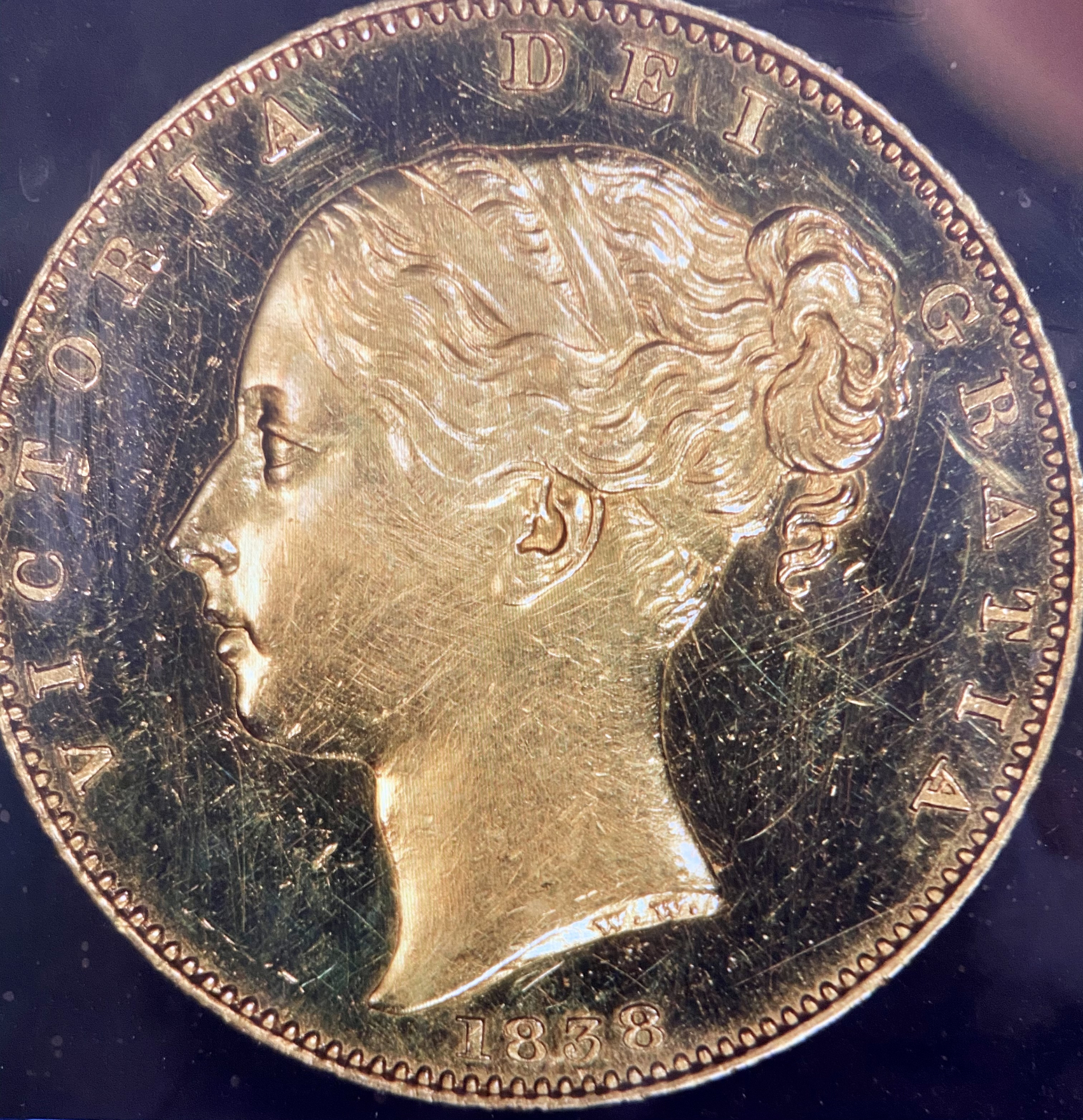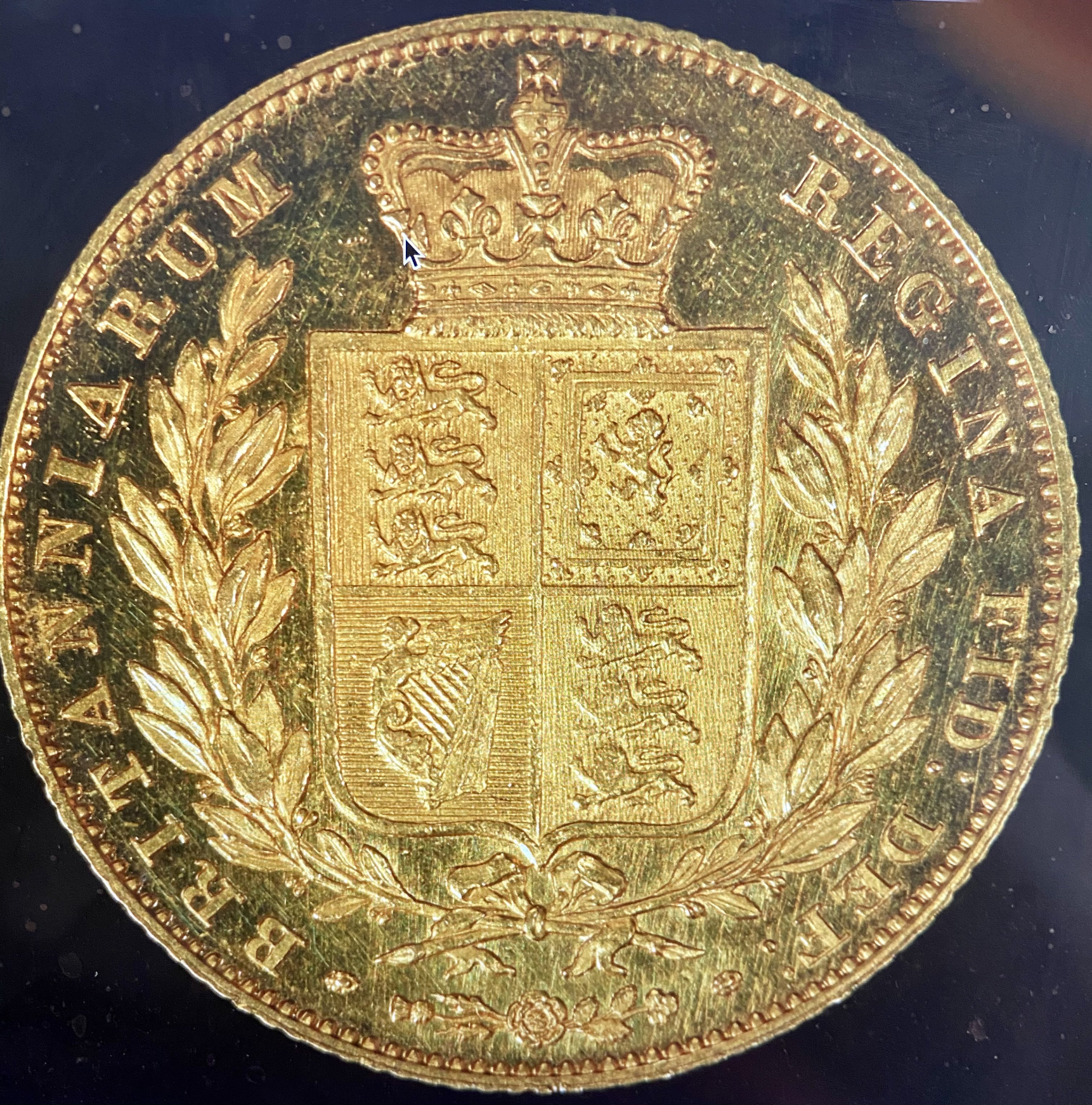1838 Sovereign, Anything Special? LOL
 7Jaguars
Posts: 7,834 ✭✭✭✭✭
7Jaguars
Posts: 7,834 ✭✭✭✭✭
Tell me about this coin - not mine anymore:


Story to follow this evening.
Love that Milled British (1830-1960)
Well, just Love coins, period.
Well, just Love coins, period.
1
Comments
That was the year that James Smithson's estate was finally settled and approximately 105K in sovereigns were sent to the United States to fund the foundation of what would become the Smithsonian Institution.
Ah, but this coin just might not be a "garden variety" 1838....
Yes, that story is oft-repeated and seem to recall that most were melted....
Well, just Love coins, period.
Certainly looks PL
Latin American Collection
significant die polish on the reverse. Should PL. The W. W. seems bold but I am not familiar with all the characteristics of the Victorian Sovereigns as do not actively seek out British gold.
Experience the World through Numismatics...it's more than you can imagine.
OK, here goes a bit of a story:
I was perusing Ebay.uk about 15 years ago and looked at the sovereign section. Posted at something above 1k pounds, I bought this particular coin (which I no longer own). I waited my time and at last took delivery about three weeks later.
I too thought this looked PL, but possibly nicer than the sale photos (and really these old ones of mine also). On delivery, I realised this was more than just a PL, and was in fact an unpublished variety of milled edge proof.
This is not a series I collect - although I do collect Vicky half sovs - so foolishly sent it off to "a prominent TPG". To their credit, they at least recognised it as a proof but pronounced it tooled. It clearly is not, but that is an IMHO.
Well, I pulled it out of the TPG "bodybag" and saved it against the day I might either sell it or use it in trade and about two years later one of probably the most respected experts in late milled coinage saw it. He agreed it was an here-to-for unknown proof milled edge and as he was working for a firm that had a very rare set of silver patterns (and had a buyer lined up on my surmise that it was such a proof), managed a trade that got me a set I would never have been able to and perhaps getting 10x what I paid for the sov.
Well, just Love coins, period.
Stories like this is what makes our hobby so cool.
Great story -- if you don't mind, who was the expert and what was the set you obtained in e trade? Just curious.
Pretty confident all parties were happy with the deal they made (which is what matters most).
I don't like to name drop but he has been the "main man" in this area at Spink, Baldwin's and Sov. The set was the six coin pattern set originally given to the widow of Frances Derwent Wood, featuring the "Peace" Crown of 1926 and five other patterns of his.
Here is a bit about the crown, although the two citations are NOT this coin and are two other specimens that are discussed.
Pattern for British version of Peace dollar in sale
By Jeff Starck
Published: Jan 6, 2016, 5 AM
A Peace silver crown from 1926 was never adopted for the United Kingdom. A unique pattern highlights Stack’s Bowers Galleries’ NYC auction in early January.
Coin image courtesy of Stack’s Bowers Galleries.
American collectors know about the Peace dollar that was issued after World War I, but the United Kingdom also has such a coin — it was just never made for circulation.
The crown is of comparable size to the U.S. silver dollar.
Uniface pattern
The uniface pattern offered in the Stack’s auction features a reclining Britannia with helmet at her feet and peripheral legend reading GIVE PEACE IN OUR TIME O LORD. The legend is borrowed from Anglican liturgy, with origins dating back to the Protestant Reformation, and was eventually adopted to become the refrain in the hymn of the same title.
The date is presented in Roman numerals.
“Completely without marks or other impairments, all of the design’s intended message is fully conveyed in unmistakable clarity,” according to the auction house.
In 1926 coinage was proposed in a speech delivered in the House of Commons by the historian and numismatist Sir Charles Oman, who then actively pursued the idea with officials at the British Royal Mint.
Francis Derwent Wood would first draw the design, which was then modeled by Humphrey Paget before pattern pieces were struck during July of 1926.
Only two or three pieces of all other versions are known aside from this example.
The others all bear the word MODEL on the reverse.
Only blank reverse
However, the reverse on this example is blank, the only such example known.
Oman’s son donated one example of one of the other versions to the Royal Mint Museum in 1974, according to the Stack’s Bowers Galleries auction firm.
Home Collection Coins 1926 Peace crown
1926 Peace crown
As a rarity the uniface Peace Crown of 1926 ranks very high. During that year the idea of issuing a crown with peace as a theme was mentioned in a speech delivered in the House of Commons by the historian and numismatist Sir Charles Oman and subsequently he actively pursued the idea with officials at the Mint. The design that was developed of the seated figure of Britannia was drawn by Francis Derwent Wood and modelled by Humphrey Paget and pattern pieces were struck during July 1926.
Strangely, the Peace Crown illustrated has not always been in the Royal Mint collection. It originally belonged to Sir Charles Oman and was given to the Mint by his son in 1974, a very generous gesture that filled a conspicuous gap in the Mint collection, since a specimen of the coin was not retained at the time. As the idea for the crown gained momentum other designs were considered and the pattern piece shown here was eventually abandoned, making the very few pieces that survive of this beautiful coin of real interest.
Well, just Love coins, period.
Okay - I know who you are talking about. I've talked to him a couple times in the past. As for the set - all I can say is Wow. Love to see it some time.
Interesting. I had to google that one!
Doggedly collecting coins of the Central American Republic.
Visit the Society of US Pattern Collectors at USPatterns.com.